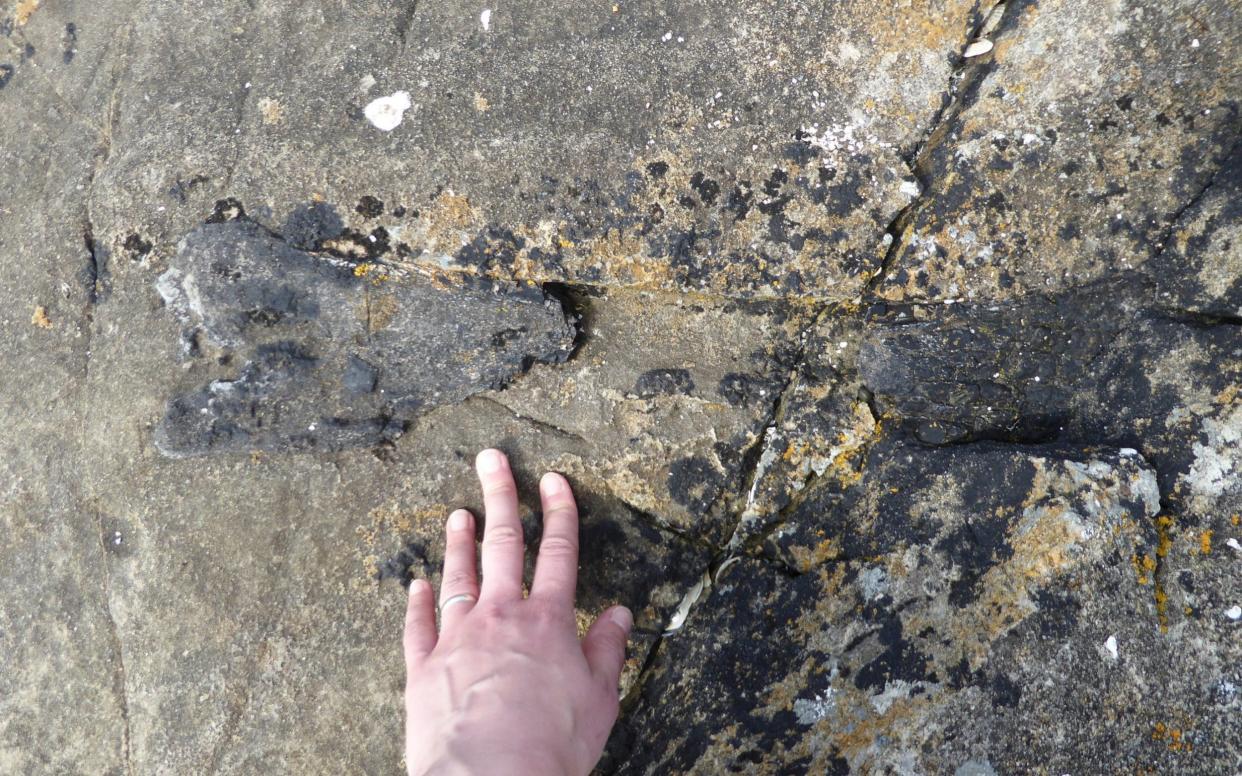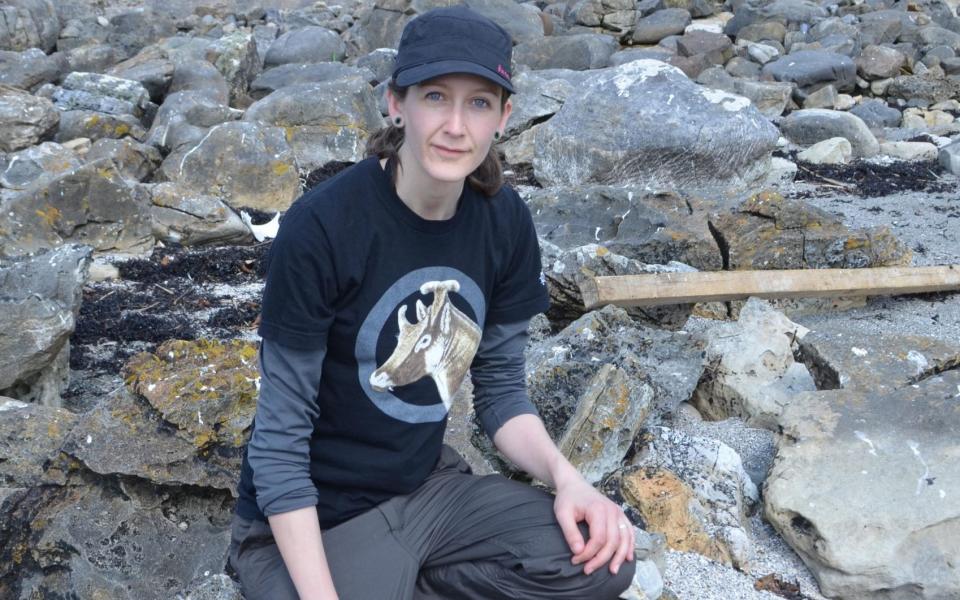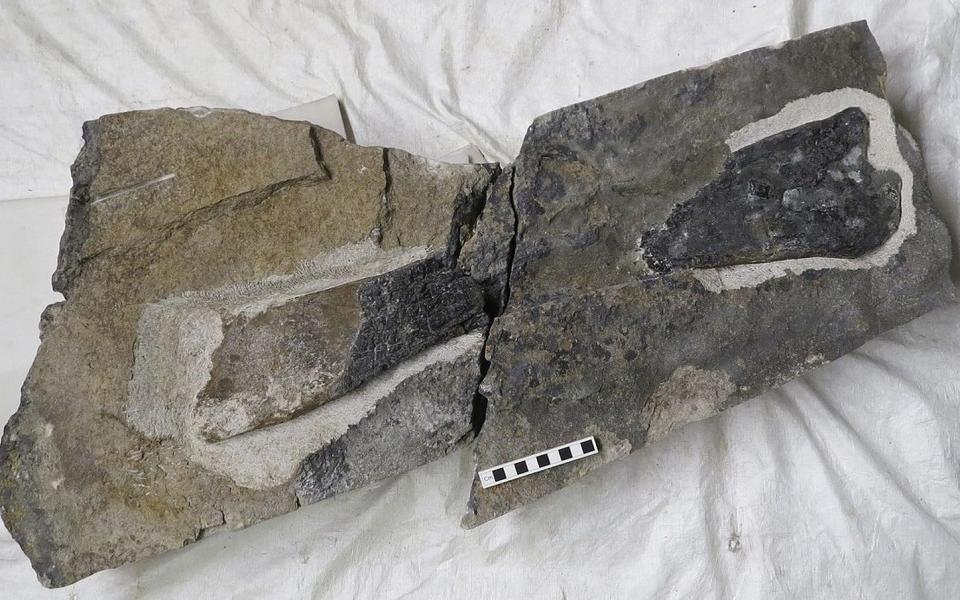Dinosaur fossil dating back 166 million years found by academic on remote Scottish island

A stegosaurian fossil dating back 166 million years was stumbled upon by an academic as she ran along a remote island beach, proving dinosaurs roamed further in Scotland than first thought.
Scientists say the 19-inch fossil found on the Isle of Eigg is "hugely significant" as it is the first unearthed outside the Isle of Skye, a neighbouring island in the Inner Hebrides.
The object is believed to be the limb bone of a stegosaurian dinosaur, such as a stegosaurus, which are known for their plate-backed appearance and herbivore diet.
It was discovered by Elsa Panciroli, a research affiliate at National Museums Scotland, who stumbled across the fossil in a boulder as she raced back to her palaeontology colleagues during fieldwork on Eigg.
The bone is now in the collections of National Museums Scotland in Edinburgh.
Dr Panciroli told The Telegraph: "There was a big team of us and we were looking along the shore to see what we could find. It was the end of the day and I was separated from the group.
“I started running along the shore on my way to meet the rest of the team and began hopping boulder to boulder when I spotted it.
“It wasn't clear exactly what kind of animal it belonged to at the time, but there was no doubt it was a dinosaur bone.

“It was just total luck. Hundreds of people could walk over the same spot and not see it, but once I became aware it was obvious."
The latest find follows on from the discovery of footprints belonging to a type of stegosaur on the Isle of Skye, the first evidence of the species in Scotland.
Experts say Eigg and Skye were "probably connected" during the Middle Jurassic era but stressed it was difficult to say with certainty.
“Finding a dinosaur fossil in Scotland, in general, is excellent - but finding one on Eigg for the first time is really exciting.
"Globally, Middle Jurassic fossils are rare and, until now, the only dinosaur fossils found in Scotland were on the Isle of Skye.
"This bone is 166 million years old and provides us with evidence that stegosaurs were living in Scotland at this time," Dr Panciroli added.
Eigg, which had a reported population of 107 last year, is already known for being a discovery ground for Jurassic fossils, with remains of marine reptiles and fish unearthed by 19th century geologist Hugh Miller.

Dr Steve Brusatte, of the University of Edinburgh, who co-authored a paper on the find, described Dr Panciroli's discovery as "remarkable", adding he believed there remained further of evidence of dinosaur activity in Scotland.
"Nobody, not even Hugh Miller himself, had found dinosaur bones on Eigg before," Dr Brusatte said.
"This fossil is additional evidence that plate-backed stegosaurs used to roam Scotland, which corroborates footprints from the Isle of Skye that we identified as being made by a stegosaur.
“The same types of Jurassic rocks are seen on Eigg and Skye, so they probably were connected back then.
“Which means that, because we’ve found a lot of dinosaurs already on Skye, there are probably more lurking on Eigg - and maybe elsewhere in Scotland.”
The first evidence of dinosaurs in Scotland was found in 1982 when a 47cm-long footprint was found on Skye.
Experts believed it was made by a type of ornithopod.
Details of the latest finding are published in Earth And Environmental Transactions Of The Royal Society Of Edinburgh.
